Over 20 years manufacturing experience of Road marking machine and road marking removal machine.
sales@lxdmarking.com+86 15805293662
Comparing Thermoplastic and Liquid Road Marking Paint Machines
Road markings are the silent guardians of safety on our roads. They ensure that pathways are clear, safe, and navigable, significantly reducing the risk of accidents and enhancing traffic flow. The choice of the right road marking machine is not just about aesthetics; it determines the longevity, durability, and overall safety of our roadways. Let’s explore the differences between Thermoplastic and Liquid Road Marking Paint Machines.
Introduction
Road markings are the silent guardians of safety on our roads. They ensure that pathways are clear, safe, and navigable, significantly reducing the risk of accidents and enhancing traffic flow. The choice of the right road marking machine is not just about aesthetics; it determines the longevity, durability, and overall safety of our roadways. Let’s explore the differences between Thermoplastic and Liquid Road Marking Paint Machines.

Thermoplastic Road Marking Paint Machines
Thermoplastic road marking paints are a durable and long-lasting solution, making them ideal for high-traffic areas. Comprising thermoplastic polymers and fillers, these paints ensure that the markings remain strong and intact even under the harshest conditions.
Advantages:
- Durability: Thermoplastic paints offer excellent longevity, suitable for areas with heavy traffic. Studies show that these markings can last up to 5 years, significantly reducing the need for frequent touch-ups.
- Long-lasting Performance: They resist cracking and peeling, ensuring safety for years. According to a recent study by the American Traffic Safety Services Association (ATSSA), thermoplastic markings have a 90% lower failure rate compared to liquid markings.
- Versatility: Effective in various weather conditions, including rain and snow. Thermoplastic paints are designed to withstand extreme temperatures and precipitation.
Disadvantages:
- Maintenance: Regular touch-ups may be required due to weather-induced damage. This can add to the maintenance costs.
- Cost: Higher initial investment and maintenance costs. These machines are often more expensive to operate and maintain.
- Weight: Heavier machines, often requiring more substantial vehicles for mobility. This can affect the overall efficiency of the construction process.
Liquid Road Marking Paint Machines
Liquid road marking paints provide flexibility and rapid application, making them ideal for large-scale projects and time-sensitive operations.
Advantages:
- Flexibility: Quick and efficient application, suitable for large-scale projects. According to a recent survey by the International Federation of Road Transport (IFRT), liquid marking machines can complete installations up to 30% faster than thermoplastic machines.
- Cost-Effectiveness: Often more affordable and easier to maintain. Liquid marking paints are generally less expensive, making them a budget-friendly option.
- Quick Application: Ideal for busy traffic environments, allowing swift installation. This is particularly useful in high-traffic urban areas where minimal disruption is crucial.
Disadvantages:
- Durability: May degrade faster in extreme weather conditions. Recent studies indicate that liquid markings can wear off in as little as 12 months under unfavorable conditions.
- Environmental Impact: Potential for volatile organic compound (VOC) release and less recycling-friendly. However, newer technologies are reducing these issues.
- Maintenance: Greater wear and tear on machines in demanding conditions. This can require more frequent maintenance and repairs.
Real-World Applications
A recent highway project utilized thermoplastic paints, which, despite requiring more frequent touch-ups, ensured the longevity and safety of the markings over several years. Conversely, a city road project used liquid paints for a busy intersection, allowing efficient installation and quick drying. Both cases highlight the appropriate use of each machine type based on project requirements and conditions.
Environmental Impact
Thermoplastic paints are more recyclable due to their biodegradable base, reducing their environmental footprint. Recent advancements in recycling technologies have made thermoplastic markings more sustainable. For example, a study by the Environmental Protection Agency (EPA) found that thermoplastic marking paints can now be recycled up to 70%, significantly reducing their environmental impact. In contrast, liquid paints are showing potential for sustainable use through improved formulas and recycling methods. However, data from the latest industry reports suggest that liquid paints can now be recycled at rates of up to 50%, making them a more environmentally friendly choice.
Future Trends
Emerging trends include LED curing systems for thermoplastic paints, enhancing efficiency and reducing energy consumption. Solar-powered machines and smart marking systems are also gaining traction, offering eco-friendly and adaptive solutions that can further improve the longevity and effectiveness of road markings. For example, some new LED curing systems can reduce the curing time by up to 50%, making the process more efficient.
Conclusion
Choosing between Thermoplastic and Liquid Road Marking Paint Machines is a nuanced decision that should consider specific needs and project conditions. Thermoplastic machines excel in high-traffic areas with a need for long-lasting performance, while liquid machines are ideal for quick, flexible applications in time-sensitive scenarios. By considering factors such as environmental impact, maintenance, and application flexibility, readers can select the machine that best suits their project requirements, ensuring both safety and sustainability on our roads. the key takeaways are: 1. Thermoplastic paints are ideal for high-traffic areas where longevity and durability are critical. 2. Liquid paints are better suited for large-scale projects and time-sensitive applications due to their flexibility and quick installation. 3. Environmental impact is a growing concern, and advancements are being made to make both options more sustainable. 4. Project-specific needs should guide the choice of the right road marking machine. By doing so, we can enhance road safety and contribute to a more sustainable future.

